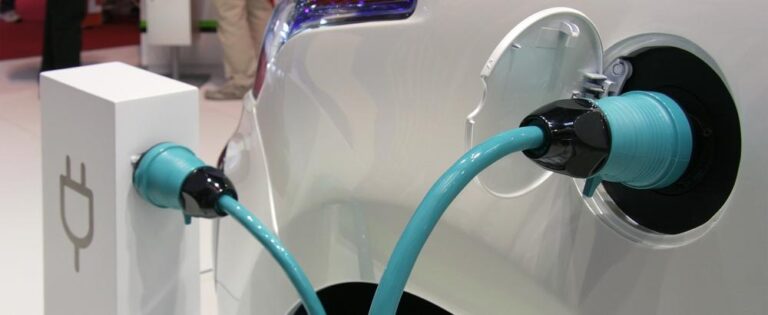Researchers have found a way to combine the fast-charging batteries used in hybrid cars such as the Toyota Prius with the long-lasting batteries carried by fully electric vehicles such as the ones developed by carmakers including Renault and Tesla.The EU-funded SuperLIB project has developed a way to intelligently shift the charge between the two types of batteries, and they have conducted simulations which show that the technology could extend the range of electric cars by up to a sixth.‘Currently … you can use for a full electric vehicle maybe 70 %, maybe 80 % of the stored energy, and we want to extend this to 90 %, 95 % by the combination of the high-energy and high-power parts,’ explained Dr Volker Hennige from engineering company AVL, who coordinates the project.Environmental credentialsEfforts are also underway to increase the environmental friendliness of electric cars by limiting the amount of raw materials used to build the batteries.The EU-funded SOMABAT project, which finished in 2013, developed a new type of lithium battery by creating new materials for the electrodes and electrolyte from sources including agricultural waste products. The new electrolyte material was solid, which greatly reduced the chances of short-circuit and fire and improved the safety of the batteries.The project also aimed to make 50 % of the materials used in the battery recyclable. Accurec, an industrial partner on the project, designed a bespoke process that could recycle up to 60 % of the battery materials. The project partners are now working to further improve the materials developed during SOMABAT and find other applications of the new chemistries.What they do is use the long-lasting battery as ‘a big buffer’, while the higher power hybrid-style battery deals with periods of high acceleration and enables faster charging.This allows for better kinetic energy recovery for increased driving range and extends the battery life of the long-lasting battery.The group has now completed the hardware implementation of the new battery and will work with their industrial partners Fiat and Volvo to put the fully integrated design into a commercial electric vehicle.‘Such a phase typically takes three to five years,’ said Dr Hennige.Iron-airIt’s technology that could be used on the road soon, but there are a number of radical ideas that are still at the development stage which could have a major impact on battery life, including using the reaction of metal with air.‘This limitation in energy density of the battery means in practice a reduction in the driving range of these vehicles, which is the largest obstacle faced by electric cars today to enter the market,’ explained Dr Alberto García from Technalia, a partner on the NECOBAUT project.NECOBAUT is looking at incorporating advanced nanomaterials into batteries. Based on the reaction of metal with air, the technique could theoretically enable a battery to store eight times more energy than traditional batteries, although this has not been demonstrated in real-world tests since the design was first trialled in the 1980s.Batteries convert stored chemical energy into electrical energy by chemical reactions and they can be made from a variety of raw materials, though their basic design is the same. Each cell of a battery (a typical electric vehicle has hundreds of these cells) consists of a positive electrode (a metal compound), an ion conductor (electrolyte) that can be a liquid or solid, and a negative electrode (normally graphite, a form of carbon).The team will use metal-based nanomaterials to increase the surface area of the electrodes available for chemical reactions. It is hoped this new approach will take the storage capacity of the batteries closer to their theoretical limit.2009The European Green Vehicles Initiative is launchedThe performance of electric and hybrid cars continues to improve. As concern about resource scarcity and climate change grows, the European Green Vehicles Initiative is launched to promote the development and use of electric vehicles. The initiative aims to get half a million electric and hybrid vehicles on the road in the EU by 2016, with a target of 5 million by 2020.On a per capita basis, Estonia has the largest number of electric vehicles in the EU, and has deployed charging stations nationwide. Creative Commons Noebu
This article was originally published in Horizon, the EU Research and Innovation magazine.
Add to favorites:
Share:
Listing Description
Video
Documents
No documents available.
Ask KETMarket to make a contact
Connect with the Listing Owner!
💬 Please log in now to askKETMarket to make a contact. Not a member yet? Sign up for free and start connecting today!
Video
Related Funding and Finance Opportunities
Unlock Exclusive Funding Opportunities!
🔑 Get instant access to tailored funding opportunities that perfectly match your needs. This powerful feature is exclusively available to our premium members—helping you save time, stay ahead of the competition, and secure the right funding faster.
Upgrade to Premium now and never miss an important opportunity again! Already a premium member? Log in here to explore your matches.
Related Innovation Offers
Discover Tailored Innovation Offers!
🚀 Gain access to technology solutions that match your specific needs and interests—carefully selected to support your innovation goals. These offers are exclusively available to our premium members, helping you identify relevant technologies faster and start the right conversations with potential partners.
Upgrade to Premium now and explore your personalized technology matches today! Already a premium member? Log in here to view your tailored offers.
Related Knowledgeable Resources
Discover More with Premium: Related Knowledge Resources
🔒 You’re missing out on expert-curated knowledge specifically matched to this topic. As a Premium member, you gain exclusive access to in-depth articles, guides, and insights that help you make smarter decisions, faster.
Whether you’re preparing a funding proposal, researching a new market, or just need reliable information—our Premium knowledge matches save you hours of research and point you directly to what matters.
Upgrade to Premium now and instantly unlock relevant knowledge tailored to your needs! Already a member? Log in here to view your personalized content.

